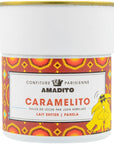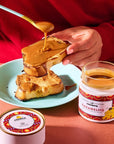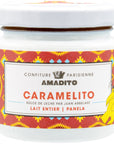


Caramelito Dulce De Leche
SKU: 50895
This year, Confiture Parisienne invites you to celebrate Christmas under the sun. And who better than Juan Arbelaez, the great Colombian chef, to bring sunshine to everyone's plates? In the winter sunshine, let yourself be carried away by the captivating flavors of Confiture Parisienne's new “Caramelito Dulce de Leche”, a milk jam with a creamy texture that transports you straight to Colombia.
These statements have not been evaluated by the Food and Drug Administration. This product is not intended to diagnose, treat, cure, or prevent any disease.
May Contain Traces off: Egg, All Nuts, Gluten, Sesame, And Milk.
Ingredients may be subject to change. The most accurate and up to date product ingredient list can also found on the product packaging.
Since ancient times, foodies have developed various recipes for preserving fruits by cooking them with wine or honey.
But to taste jams as we know them, you have to wait for the first crusades and the introduction of cane sugar from the Arab world. This luxury food allows the transformation of fruit into jam, only reserved for royal tables. At the beginning of the 19th century, the production of beet sugar democratized this product. In Paris, many jam makers opened their stalls and supplied themselves with fruit from the surrounding orchards.





